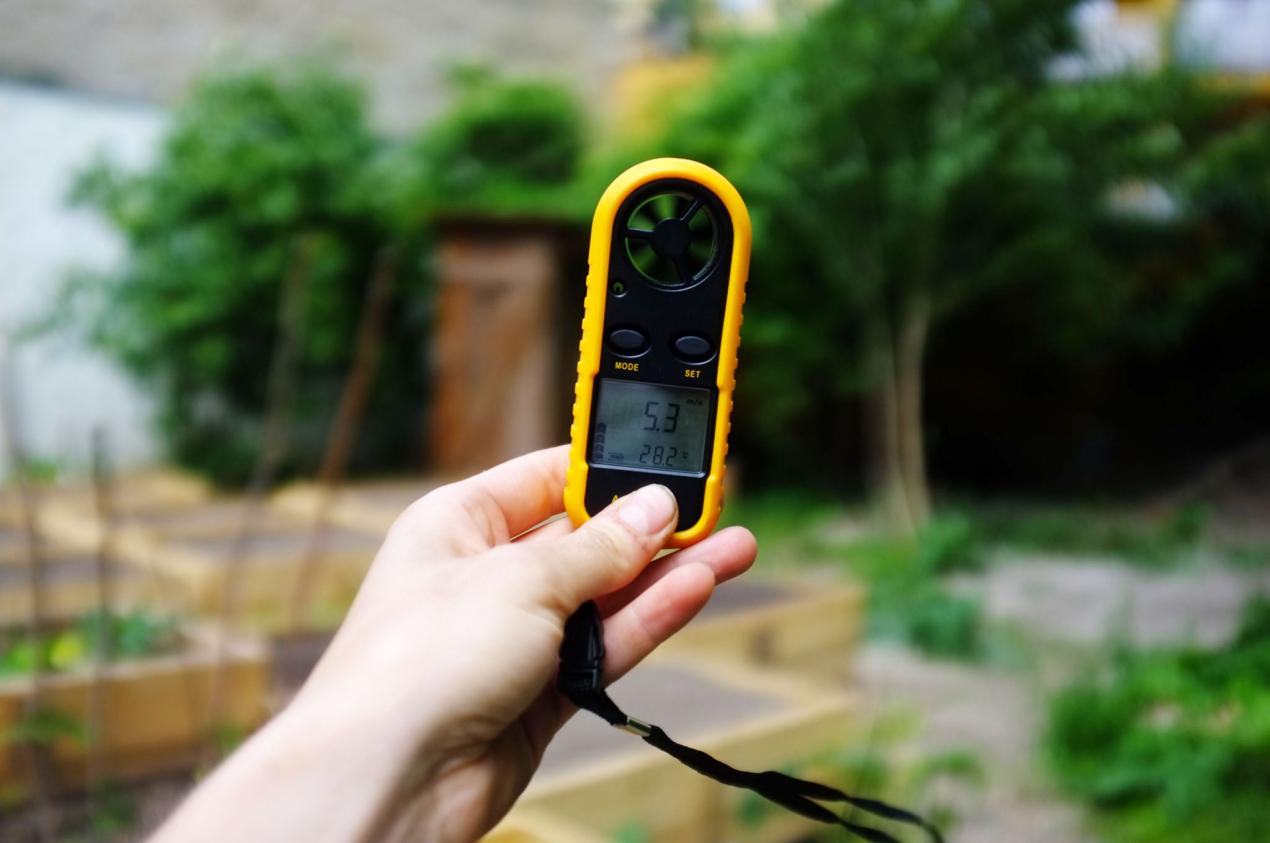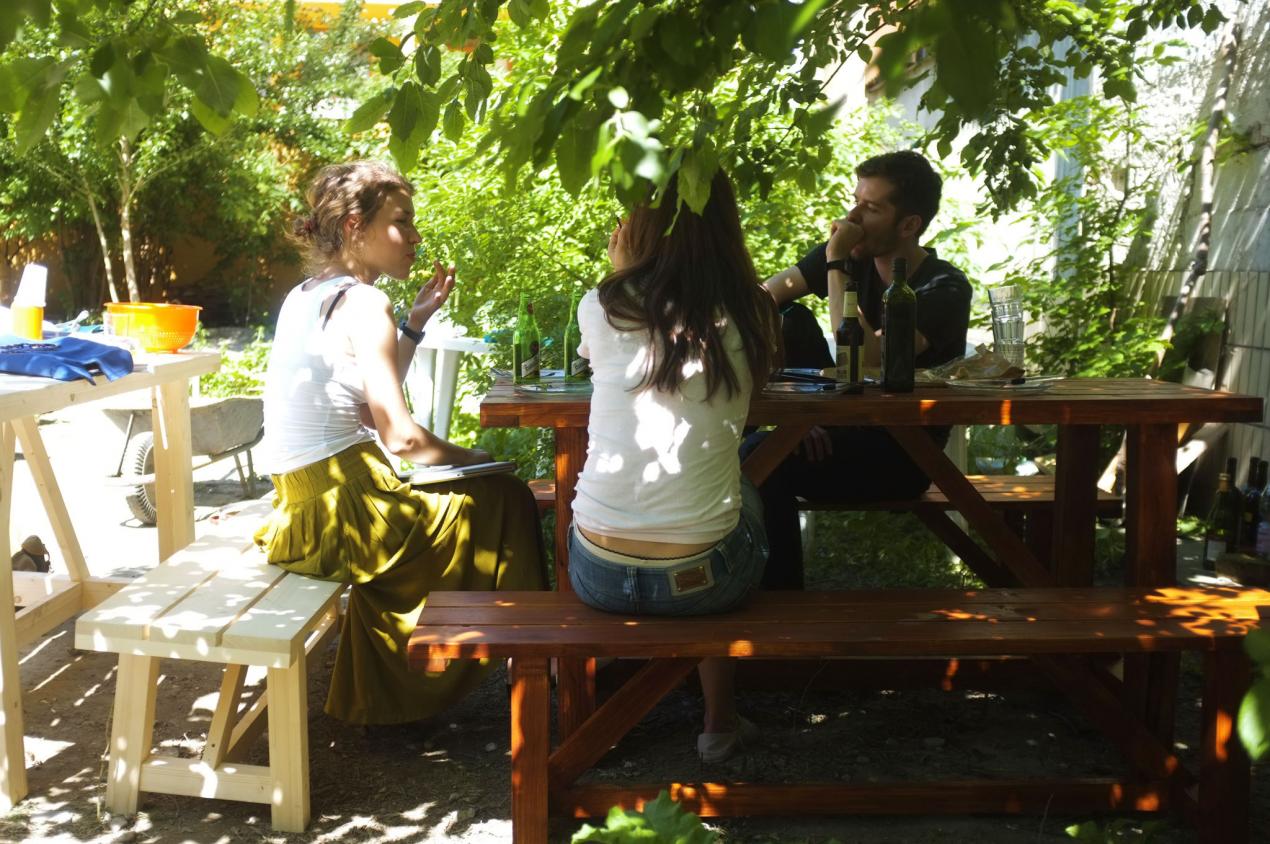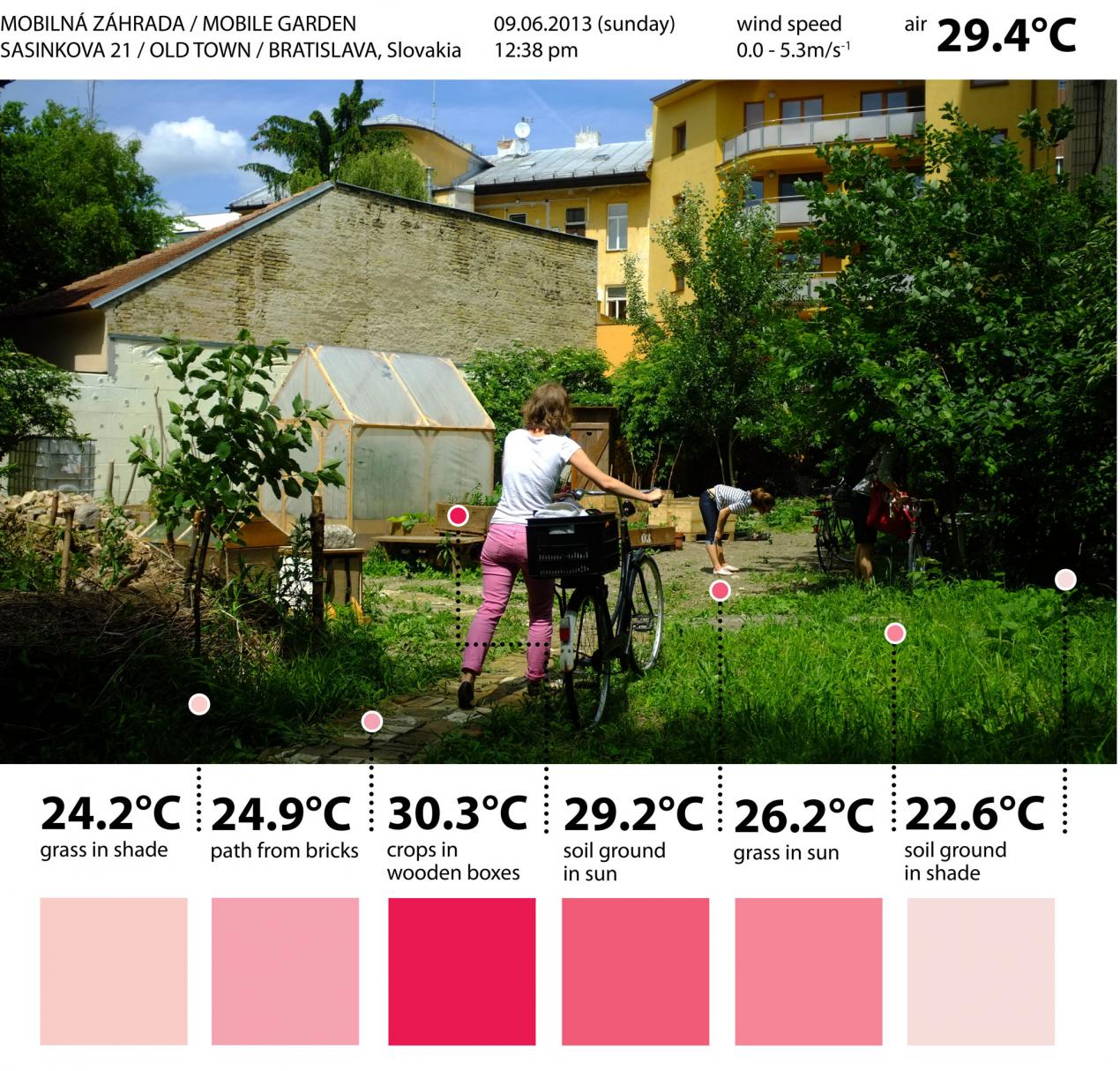Hidden Lungs of the City

The human civilisation is becoming ever more urban. With the growing densification in our cities, open, green spaces are put under pressure. As a person living and commuting between the Austrian and Slovak capital, I see the increasing number of built, non-permeable surfaces (such as asphalt and concrete) increase. Occasional and sudden events such as overflowing streets of Vienna after a heavy rain or snow melting down, or an overheated square in central Bratislava during the summer period are a result of continuous, reckless paving of our cities. This is not climate change. This is visionless urban planning.
I would like to bring up a relatively small but growing development I observed that does have a positive effect on stormwatermanagement, biodiversity and microclimate in urban areas. Since April 2013 I'm a happy touring gardener – having my own roof garden in Vienna and helping with head and hands the first community garden in the Old Town, the central district of Bratislava. Mobile Garden on Sasinkova 21 in Bratislava is located on a former vacant private plot, an urban void. It was initiated by active, visionary and risk taking young citizens who have decided to take things into their own hands and do something noone else has started or envision before: a vegetable producing communal space. Uniqueness of this project is founded in its "mobility” and a temporary, open-end contract between the occupant (the gardeners) and the private owner (person whose plot is on sale). Once the market picks itself up and the plot will be sold, the garden has to move away. Ideally to another empty, unused space in the city.

It is mostly the social aspect that is stressed as a positive effect of setting up and joining community gardens. You meet random people with different backgrounds, you get to know your neighbours, extend and nurture your 'offline' social network. This, I have to say, works extremely well on Sasinkova 21. It is a true neighbourhood, multi-generational and -international space where all layers of the social structure meet.
There is also another, maybe less visible layer created and fostered by establishment of community gardens in cities. Whether such projects are temporary or permanent, they offer a new public space for the people, a permeable surface allowing water absorption (important for a ground water level as an important source of water for urban vegetation), a green space with shade and a cooler microclimate compared to the one in the built and paved environment. With the help of two simple and widely available devices – an anemometer (measuring wind velocity) and an infrared thermometer (measuring the temperature of solid surfaces), I have unveiled an unseen layer of the urban fabric. The cooling wind let between the buildings, shade under a green tree crown and ground vegetation offer a pleasant micro-climatological urban space for the people. New urban spaces such as the Mobile Garden Sasinkova 21 form the hidden lungs of a neighborhood.
As the cities are used more intesively, the open public and permeable spaces are becoming scarce. Semi-public spaces in dense neighborhoods such as community gardens, give us - city dwellers – the possibility to discover and connect urban life with its ecological and climatological processes. Informal city building, in my opinion, should not be left unnoticed, but seen as a part of a possible solution working towards a resilient city. Where both urban and natural look for ways to work together.

Veronika Kovacsova is a graduate in urban sociology (MSc., University of Amsterdam), currently finishing her studies in urban design at the Amsterdam Academy of Architecture. She is living and working in Vienna, Austria.
Links:
